2020 November

LAŠKI RIESLING 2018
Reserve
The wine is 100% Laški Riesling 2018 from the Livišče vineyard, in the Vipava region. The left side of the vineyard is closest to the source of the Lijak stream. The vineyard is just below the skydiving starting point. It’s an area where the wind blows little by little all the time. In the morning fog also forms from the stream for a short time.
The natural conditions allowed the grapes to be enriched with noble rot, i.e. botrytis, which is not the most characteristic of the places located at the crossroads of the Mediterranean and continental subalpine climate.
From four hectares of vineyards on which 15,000 Laški Riesling vineyards are planted, we have 3,600 liters of natural essence. From the latter we have selected the best grapes for a special barrel. The wine is made according to the traditional Vipava method. After two years of aging in oak barrels during the waning moon, the selection was filled without filtration into 33 three-liter bottles under the name Laški Riesling Reserve MMXVIII.
The wine is suitable for drinking today. However, it can be aged until 2040 - 2045.
All wine needs is to take time in good company.
Cheers!
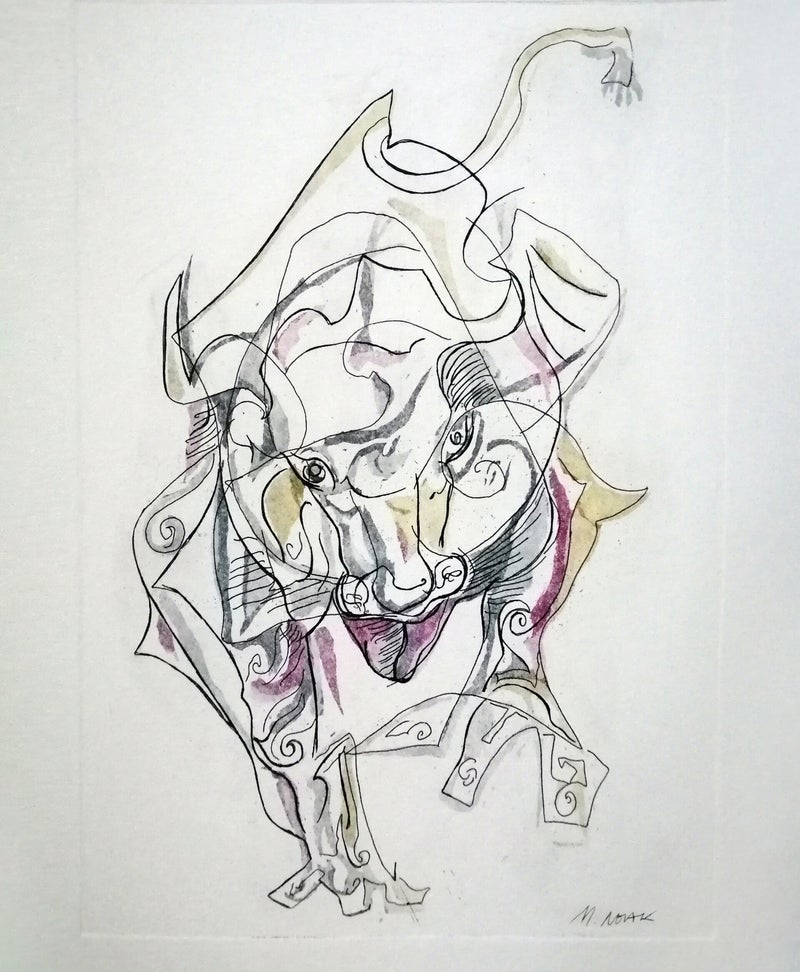
2020, July - by Marcel de Cocq, writer / blogger
Angel Rezerva 2011 (Batič)
🍇 Pinela, Zelen, Vitovska 🇸🇮 Vipava, Šempas
.
Experiencing Batič Angel again brings back warm memories of my visit to the winery in Šempas in spring 2019 with @theorangewineclub. It was fascinating to hear Miha Batič's extensive highly philosophical explanation of their way of biodynamic farming in Vipava valley's microclimate, the importance of the lunar calendar and the cosmos, and about how they approach nature in their vineyards as a biotope with natural harmony and biodiversity.
.
The Batič winery has a long history dating back to 1592 where the estate was founded by the monks of Šempas, who were already traditionally making wine with complete connectedness with the terroir of the Vipava valley and the flow of its nature. This knowledge was passed down from generation to generation for over 400 years, a legacy that is now being continued by Miha Batič. Batič wines are not only seen as a homage to the Šempas monks, but they are also a continuation of their traditions and methods.
.
Angel White is a high end Batič cuvee, expressing the best parts of their vineyards and is only made in optimal years. Angel Rezerva 2011 is particularly special because the assemblage is different, and it was macerated for 3 weeks, instead of the regular 1 to 5 days.
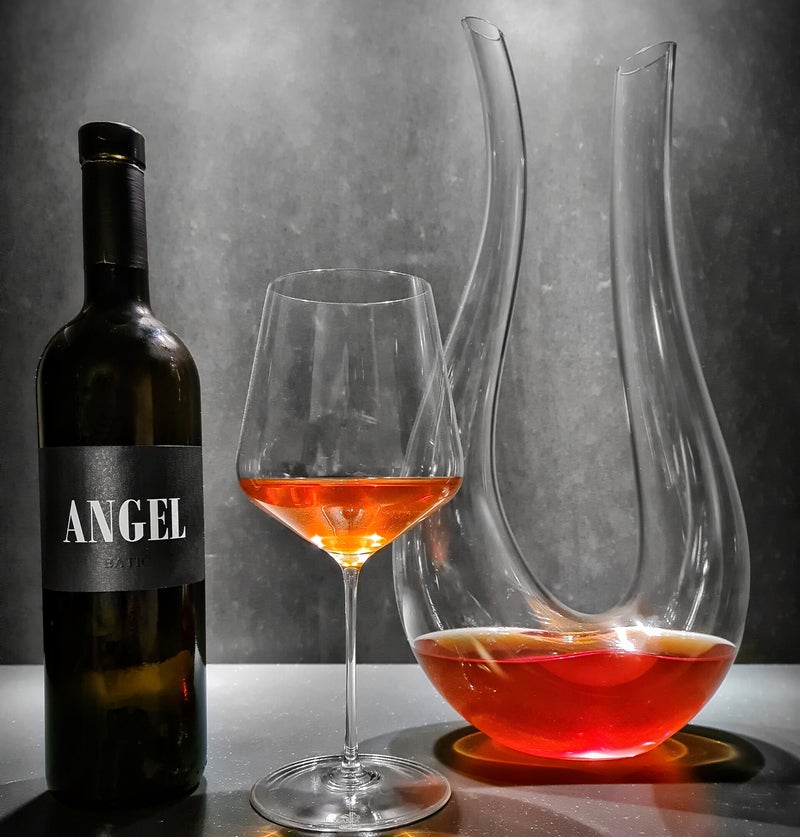
With refinement, elegance, depth, vitality ánd something mystical it has a beautiful aroma's of: dried apricot, brown almonds, bruised red apple, acacia blossom, sandalwood, yellow raisins, some dried fig, dark honey, marmalade of orange zest, with remote hints of warm spices. With high slicing acidity and polished tannins it has on the palate also references of apple cider, fresh orange, baked apple, dark tea and with sage-like herbal bitters with orange zest in the finish. All together also a very good umami match.
.
This highly gastronomical wine is flourishing in excellence and is for special occasions, but it is rich enough to also be enjoyed on its own in a respectful moment of relaxation.
.
Sweetness: D Acidity: H Tannin: M- Body: M Finish: L
.
Rating: 😣 [ * * * * * * * * ⭐ * ] 😁 9.5
.
Wine & Crystal by @theorangewineclub.nl
💎 Rogaška 1665 Lira & Aria
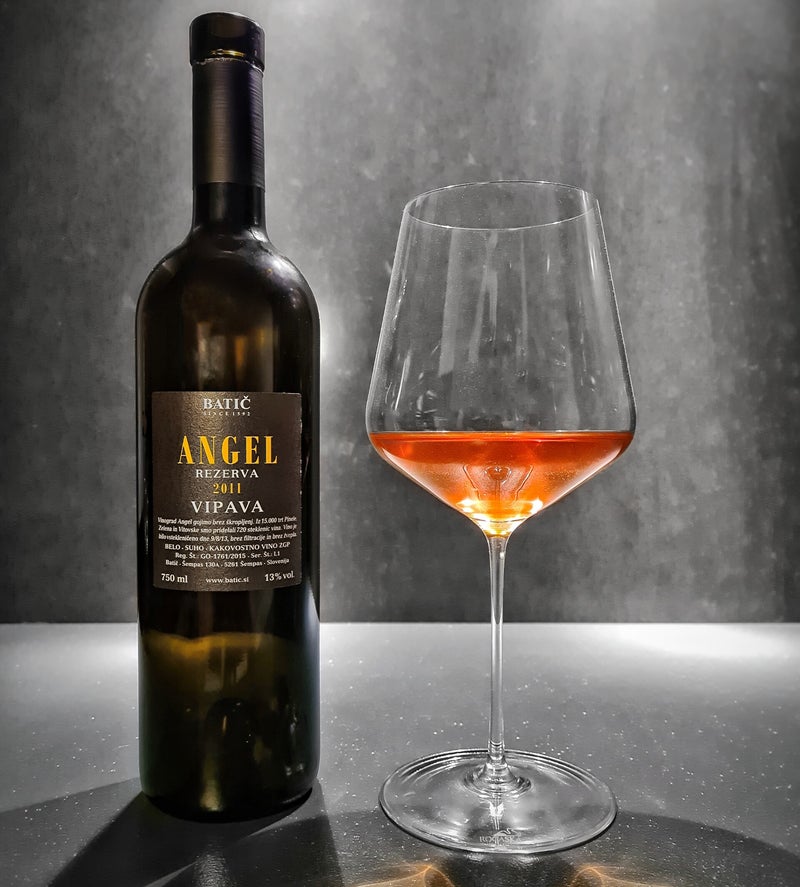
➡️ Tech facts:
From 15.000 vines only 720 bottles of Angel Rezerva 2011 have been made, because they leave only 0.5 kg of grapes growing on each vine, the rest is being pruned away. This is done to direct all the energy of the plant to a few very health bunches with focus for optimal ripeness, concentration and maturation potential.
.
"2011 was a special harvest. It was one of the first years that the young Angel vineyard produced grapes. They were tiny and there were only a few, but their taste was delightful; each grape invigorated the body and soul.
.
From the Angel vineyard planted in 2007 which was never sprayed. Cultivation: Fully Biodynamic (Demeter) with PCS. Soil: Marl. Manual harvest from the middle of september to the middle of October. Spontaneous fermentation with indigenous yeast. The wine stayed for 3 weeks on its lees with also 3 weeks maceration and maturation for 24 months is Slovenian oak barrels. Everything is done following the lunar cycle and zero SO2 or other preservatives are added during the entire process."
.
#baticwine @rogaska1665 @theorangewineclub.nl
2020 January - by Marcel de Cocq, writer / blogger
Masterclass Orange Wine
A flight through the world of Natural Orange Wines with a dynamic selection of wines presented at the Orange Wine Revolution. An experience of the various hues of macerated white wines and their difference in style and character by region and vinification.
During the Orange Wine Revolution we presented a selection of macerated white wines with which we opened a dialogue with the audience where we showed that there are actually many different shades of Orange and that Orange is not always the most logical term to use.
All the wines in this masterclass gradually build up by aroma intensity and level of tannins by maceration times and grape characteristics.
Skerlj Vitovska 2017 - Italy, Carso
Maceration 2 weeks, 2 years oak
A very light and quite young wine which at first sight almost looks like a somewhat darker white wine. But still this wine was macerated for 2 weeks which normally could already give quite some color with other varieties. Of course, aging can be a factor that can influence the color, but since Vitovska is quite an elegant a grape with not such a thick skin there is also not that much color to extract. Also Vitovska doesn't have many "masking" aroma's and therefore it is an ideal variety to use for a maximum expression of terroir through minerality.
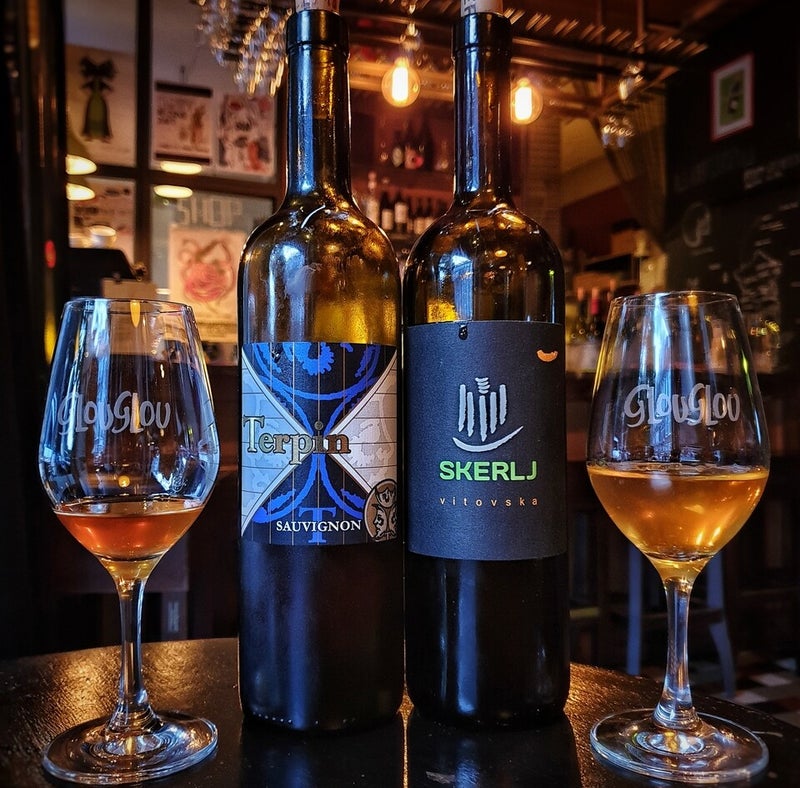
Slavček Sivi Pinot 2017, Slovenia, Dornberk
Maceration 6 days, 2 years oak
Next up a Pinot Grigio, slightly darker than we conventionally know it, and in color not that different from the first wine. It has some more depth and a bit more aroma's but it is definitely not an "Orange" wine yet if you look at it. It does show a slight color differentiation by having a tiny pigment of pink, which is interesting since normally Pinot Grigio is mostly known as a "white" wine.
Terpin Sialis Grigio 2015, Italy, Collio
Maceration 2 weken, 1 year oak, 3 years bottle
Directly moving on to a wine that perfectly demonstrates how a fully macerated Pinot Grigio can look like. Since Pinot Grigio isn't a white grape but actually has a grey/pink skin, it makes a wine with a copper-red color when being macerated. The Italians call this "Ramato", which gives a beautiful and special color to the wine, but which even remotely doesn't look like Orange.
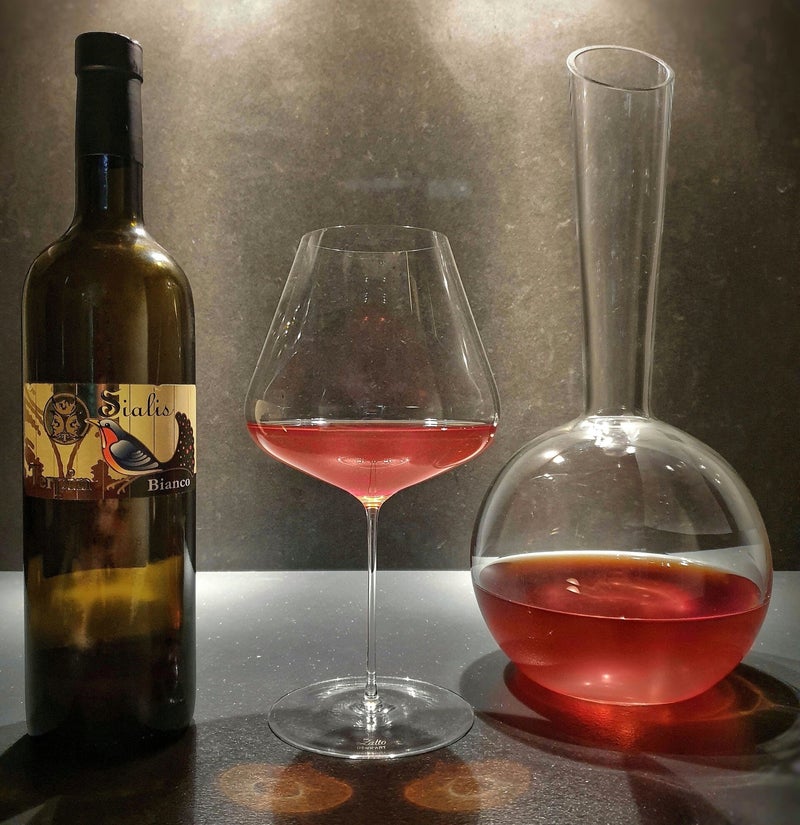
Klabjan Malvazija 2016, Slovenia, Istria
Maceration 7 dagen, 2 year Slovanian Oak
An outstanding Malvasia, which was also one of the finalists of the Proefschrift Orange Wine Concours during the Orange Wine Revolution 2020. Malvasia is a common grape for Orange wines and there and there are many fantastic and famous deep full Oranges wines made from Malvasia, but with this wine we demonstrate that also here the color doesn't turn out to be "Orange", but goes more towards dark yellow, since the wine is still young maceration time here was only 7 days.
Aci Urbajs regular - Chardonnay, Kerner, Riesling 2015 & 2018, Slovenia, Rifnik
Maceration 2 to 3 weeks, 1 year Slovanian Oak
Here we present two different vintages of wines that were vinified in exactly the same way but have a completely different color. This demonstrates that a big difference in color can also come from differences between seasons. Here the first wine is easily recognizable as a cloudy yellow looking wine, while the second wine clearly identifies as a "real orange wine" with deep orange hue.
* Since the difference between these two specific wines in color is so big, we contacted Aci Urbajs to verify if the vinification was indeed exactly the same, which he confirmed.
DoReMi - Mtsvane 2018, Georgia, Kakheti
Maceration 1 month, 14 months aging in Qvevri
A flight through the different hues of Orange wines would not be complete without paying attention to Georgia which has a centuries old inspiring tradition of making macerated white wines.
This Mtsvane 2018 is a wine from the winning winemaker of the Proefschrift Orange Wine Concours of the Orange Wine Revolution during the Wine Professional Wine Fair in Amsterdam. It is an outstanding example of a true orange wine, which excites extra because of the distinctive and outspoken aromas of a Georgian grape variety like Mtsvane and the use of Qvevri.
The winning wine of DoReMi was a 2017 blend of Mtsvane & Rkatsiteli.
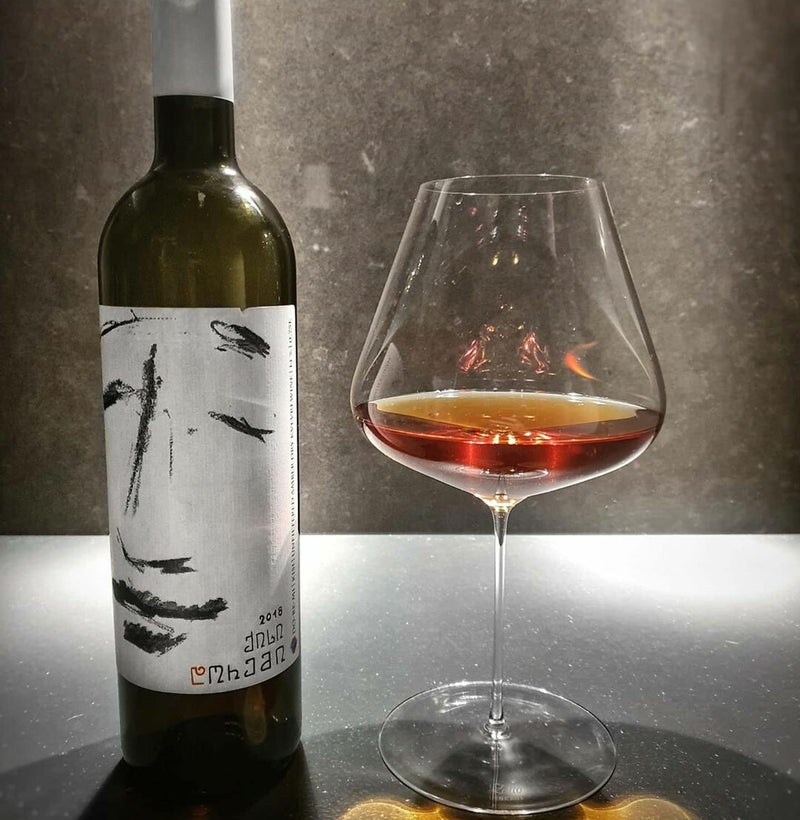
Terpin - Ribolla 2011, Italy, Collio
Maceration 20 days, 1 year in oak, 1 year in steel, 4 year in bottle.
Of course the final wine of this Masterclass had to be a true orange wine made from the legendary and praised Ribolla, which is the local pride of the Oslavje / Collio region and which is also widely grown in Slovenia, the theme country of the Wine Professional Wine Fair 2020. In both regions many highly respected macerated Ribolla wines are grown like the wines from: Batič, Gravner, Svetlik, Radikon, Slavček, Dario Prinčič or Mlečnik. But here we choose a wine from Franco Terpin again to demonstrate the full character and the depth an Orange Ribolla can give.
This classic Ribolla wine is the perfect and logic finish for this masterclass because of its robust character given by the tough thick skin of the grape with its naturally high level of tannins.
Coming from 2011 this wine is much older than the other wines in the masterclass. We did this on purpose because macerated Ribolla wines benefit from some proper aging so the rough tannins have the time to smooth out and harmonize with the other characteristics of the wine.
2019, December - by Marcel de Cocq, writer / blogger
SOLO MM16 Vodopivec
🍇 Vitovska 🇮🇹 Carso, Colludrozza
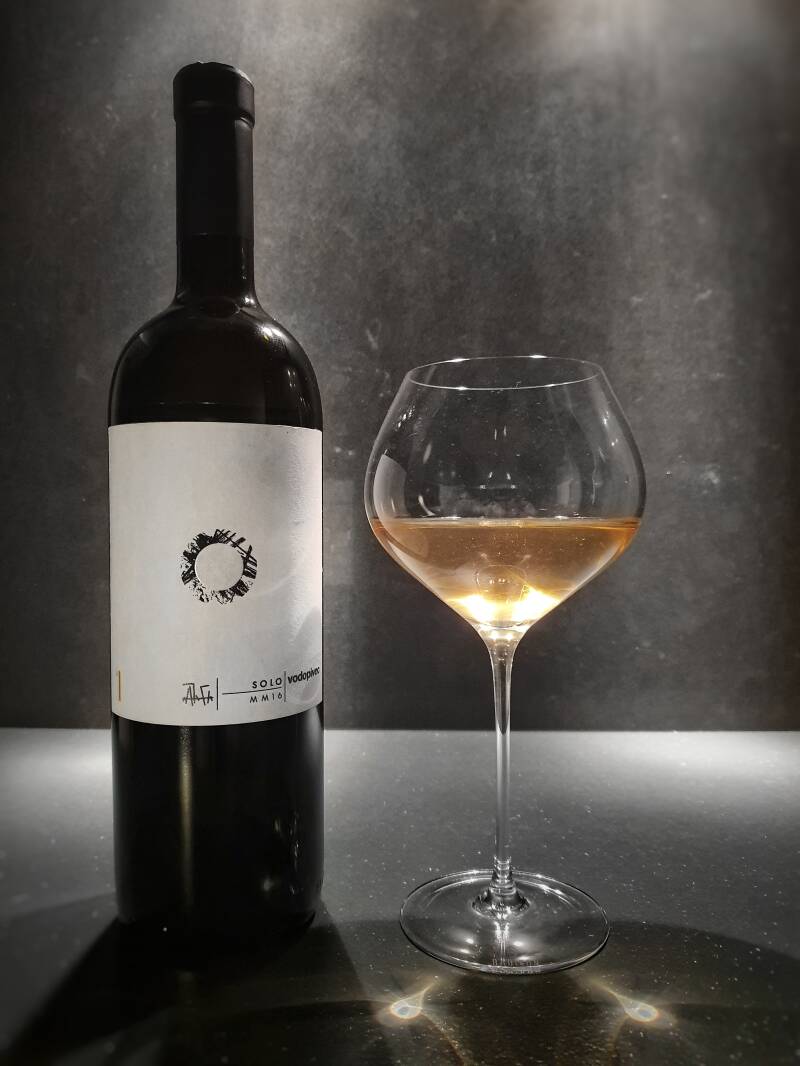
Vodopivec wines are serious Terroir driven wines with perfect purity that are grown with an extreme full circle, real natural biodynamic philosophy on a level beyond imagination. Moon, earth, land, grapes and all their energy combined. An approach with sharp choices and environmental challenges like the Carso soil and the Bora wind.
Before I had '11 & '15, here '16 has an intriguing complex concentration of somewhat creamy tones of grass with floral fresh hints of chamomile, stones, earth, some yellow apples, white almonds, bit of honey, some light wood, remotely maybe some melon, a touch of tea, very young pears, and later also light tones of toast & caramel.
Conceptually, next to seeing, smelling and tasting there also is a 4th dimension and that is the overall experience of strong developing dynamics that play your whole being.
SOLO is macerated for 1 year in Qvevri's and is aged for 18 months in big oak.
To make a skin contact wine with this maximum Terroir expression you need a grape variety that doesn't have too much masking aromatics, therefore they have full faith in and focus on Vitovska, the ideal local variety for their, hard and correct rocky Carso Terroir expression.
Paolo wants the soil on which he grew up that expresses the complete local environment, to come fully back in the wine, so as intended, in the long mineral finish, with balance, finesse and elegance, you can almost literally taste and eat the soil.
Even though the wine is made in really beautifully situated Qvevri's, the use of amphorae is only a part of the process, and is not seen as the most important part. Therefore the wines are also not marketed as Qvevri wines.
Paolo believes that fermenting and aging the wine in the rocks is also the best way to stay in contact with the terroir and the energy of the earth, therefore this circle is the ideal way to get the full Vodopivec identity in the wines.
Sweetness: dry Acidity: medium+ Tannin: medium- / low Body: medium Finish: long
Rating: 😣 [ * * * * * * * * * ⭐ ] 😁
This is a wine from @theorangewineclub.nl
⬇️ Tech facts below ⬇
Tech facts:
Grape: Vitovska 100%, indigenous varietal of the Carso sub region. Terroir: Carso Triestino Vineyards:
6 ha. in which from 1994 no chemicals have been used anymore, with rocky soils at an altitude of 260 m. Plantings density is of 10.000 per hectare. The vines are trained with Alberello trellising, with a .50kg yield per plant. Harvest: Harvested manually on the 18 th and 19 th of September with the use of crates. Vinification: The destemmed grapes are crushed and fermented, in Georgian Anfora, in contact with the skins for one year. In this period the cap is plunged several times a day. There is no use of temperature control or cultured yeast. After fermentation the must is pressed with the use of a basket press. Storage: The wine is matured for 18 months in large 3000L Slavonian Oak Barrels with opportune decantings. Bottling: unfiltered and with only a natural level of SO2 below 20 mg/l"
2019, November
Orange Wines, The Fine New Old Tradition
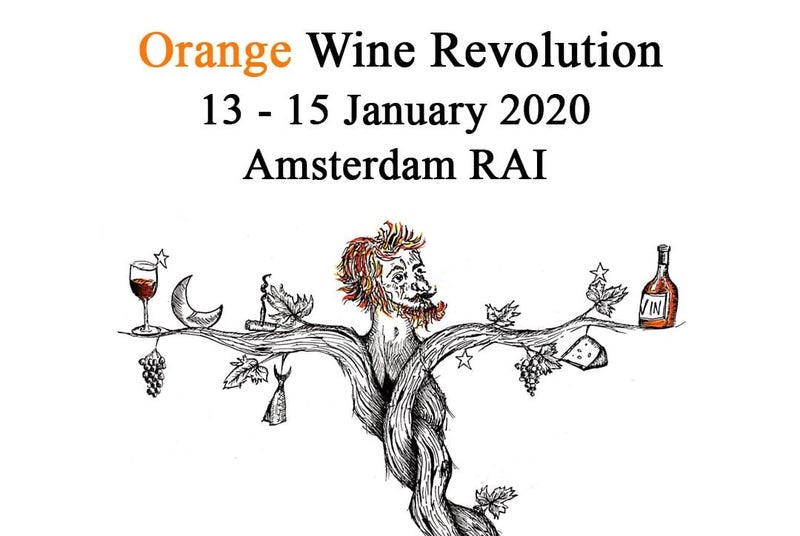
On 13th - 15th January 2020 a new edition will be held in the RAI Congress Center in Amsterdam, during the Wine Professional fair. This is organized by The Wine & Food Association together with The Orange Wine Club.
Discover and explore the fourth wine colour!
Orange wine might sound like a crazy modern invention, but it's actually one of the oldest, most traditional ways of making wine from white grapes, but treating them as if they were red - so the skins stay in contact with the grape juice. It's a very natural, hands-off, low intervention, way to do things, without any of the additives or processing that are common in most modern wines.
You'll find unique flavors and aromas that just don't exist in conventional white wines. Orange wines are truly in the middle, with the liveliness and energy of white wines, but the body and complexity of reds. They're delicious, nourishing and authentic.
This is a unique opportunity to meet many of the passionate family winegrowers who make these wines, taste their creations and find out more about their regions and traditions. You will not only be able to taste taste great Orange wines from these small winegrowers, but some will also present their red and white wines, so you can experience the full spectrum.
Various artisan farmers of delicacies like: cheese, charcuterie, truffles and oils will have a place on our event because we believe their philosophy goes hand in hand with the way of working of our winegrowers.
If you're ready to challenge your whole perception of wine, step outside the safe-but-boring confines of the supermarket shelves, come and join us on 13th - 15th January 2020 on the Wine Professional Fair to experience completely new dimensions in wine.
2019, januari - proefschrift.nl
Wijn van Gravner wint Orange Wine competitie
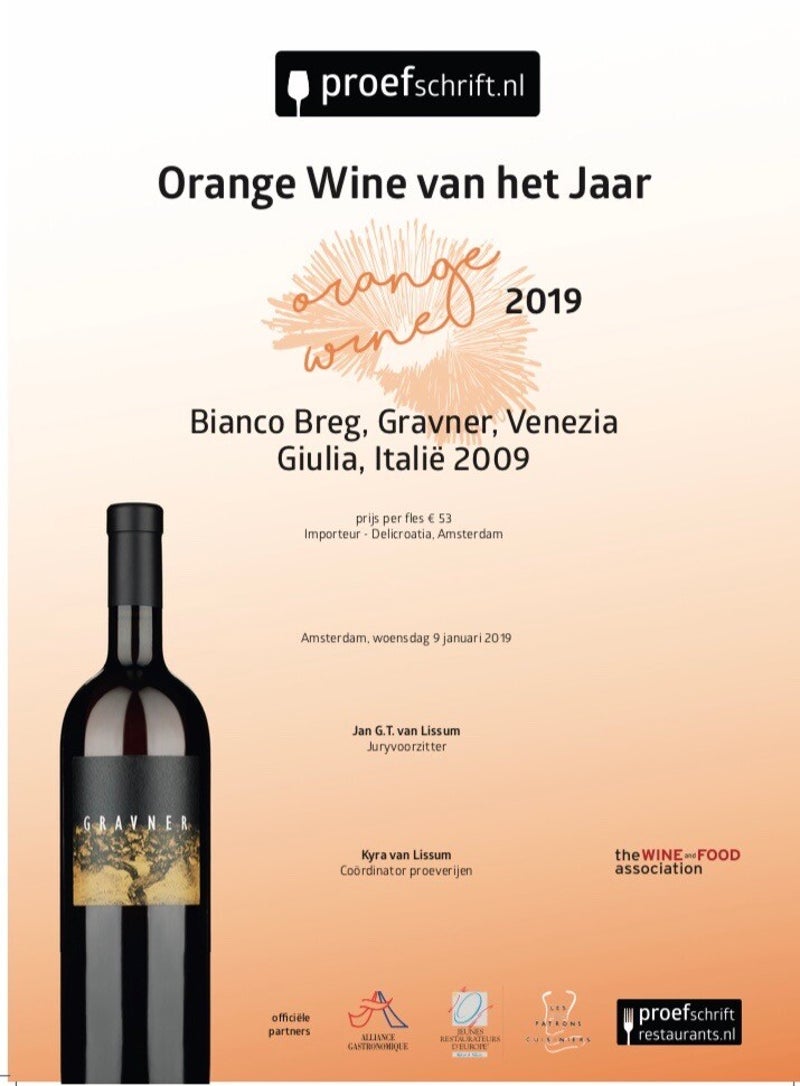
The Orange Wine Club importeur van de winnende wijn van Gravner
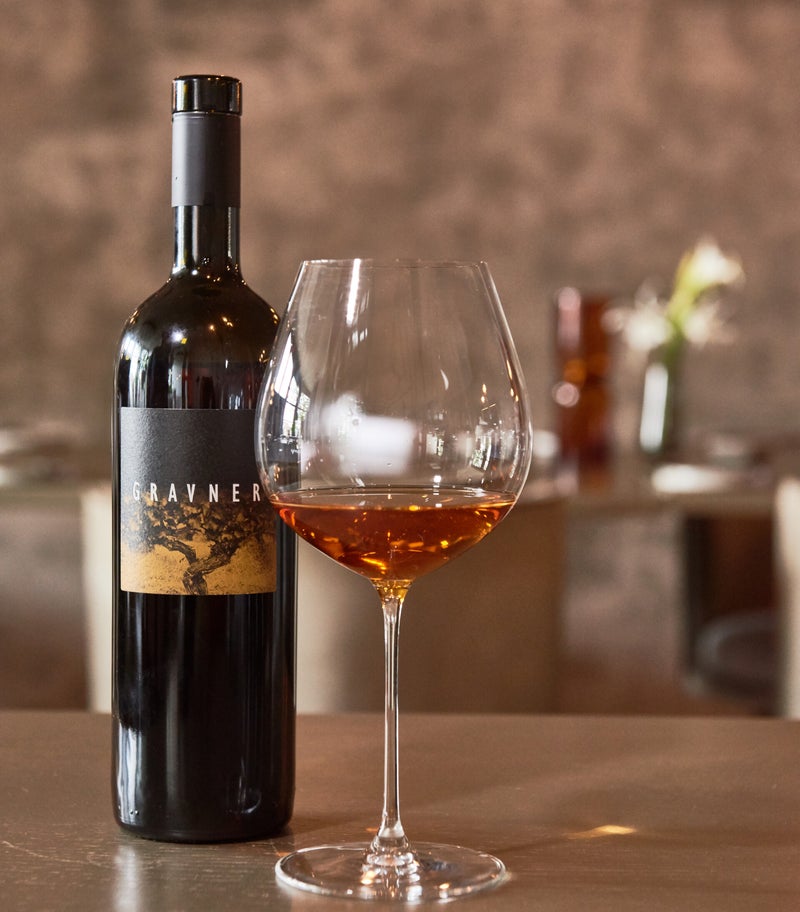
In het kader van de Orange Wine Revolution die The Wine & Food Association organiseerde, begin november in ’s-Hertogenbosch en Amsterdam, konden de deelnemende producenten hun wijnen aanmelden voor de Orange Wine competitie. Winnaar werd de Bianco Breg, Gravner, Venezia Giulia, Italië 2009 van importeur Delicroatia.
proefnotities Jan van Lissum
De winnende wijn werd bekendgemaakt tijdens een proefsessie van The Orange Wine Club op dinsdag 8 januari, in het ProefschriftRestaurants.nl Theater van Wine Professional 2019. Culinaire omlijsting werd verzorgd door restaurant Beyerick in Zeist (ProefschriftRestaurants 8,3-prijscat. tot € 55/Restaurant van het Jaar). Een team van Studio Alp uit Slovenië was overgekomen om de proeverij te filmen in het kader van een documentaire over Orange Wine die de studio dit jaar maakt.
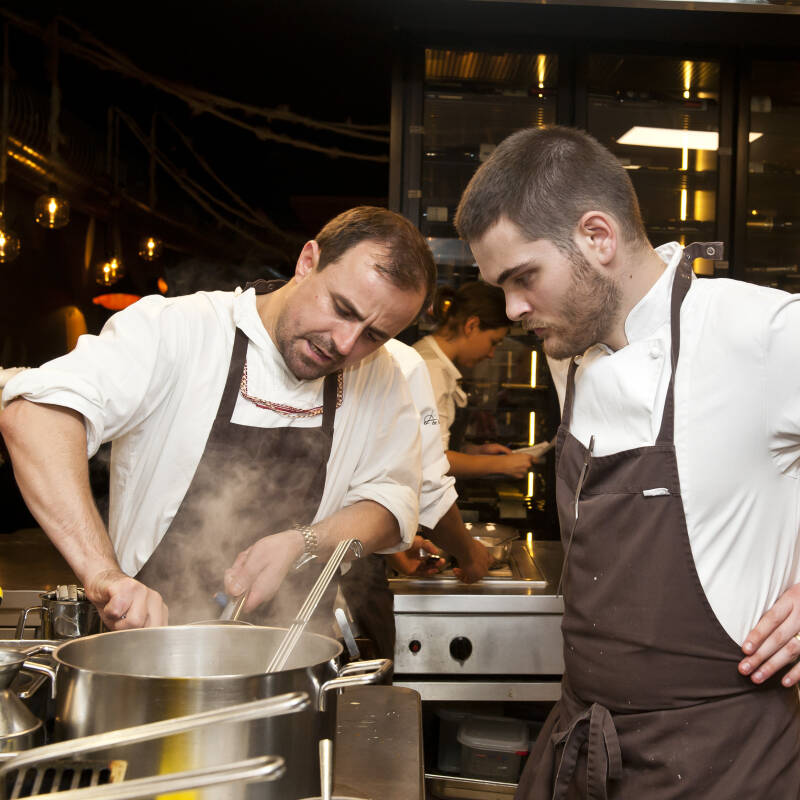
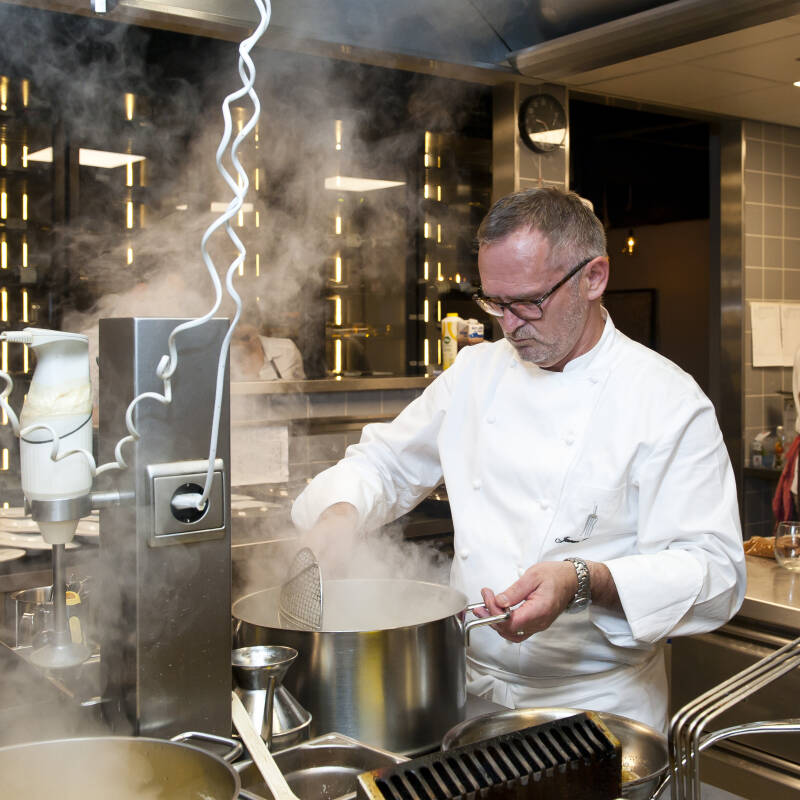
Bledar Kola Janez Bratovz
De wijnen die door de producenten waren ingeschreven voor de competitie werden geproefd tijdens de proeverij op 4 november bij restaurant Pollevie in ’s-Hertogenbosch, en de volgende dag bij de vakbeurs Gastronomie-Fine Food Professional in de RAI Amsterdam, toen professionals konden kennismaken met de producenten en hun wijnen in het Orange Wine paviljoen. Pollevie bleek een ideale locatie voor de proeverij. Chef-eigenaar Martin Berkelmans en gastheer-sommelier Otto van der Velde hebben een voorliefde voor klassieke wijnen, maar zijn beiden ook kenners en liefhebbers van vins nature en orange wines. Het past ook bij de eerlijke, ambachtelijke kookstijl van Martin die seizoengroenten de hoofdrol geeft in zijn keuken. De avond voorafgaand aan de proeverij bereidde hij samen met voor de gelegenheid overgekomen gastchefs Janez Bratovž (restaurant JB, Ljubljana, Slovenië) en Bledar Kola (restaurant Mullixhiu, Tirana, Albanië) een speciaal Orange Wine-menu voor zijn gasten. En na afloop van de proeverij verraste hij de aanwezige producenten met een smakelijk en gezellig maal.

In het midden
Orange wine dankt zijn kleur – sommigen spreken liever van ‘amber’ – en naam aan een van de oudste, meest traditionele manieren van wijnmaken. Witte druiven worden behandeld alsof het blauwe zijn: de schillen doen mee en geven de wijn kleur, tannine, structuur en complexiteit, net als bij rode wijnen het geval is. Het is een zeer natuurlijke, ‘hands off’ werkwijze, waar geen toevoegingen of procédés aan te pas komen die gebruikelijk zijn bij moderne wijnproductie. Je komt unieke geuren en smaken tegen die niet voorkomen in gewone witte wijnen. Orange wines staan precies in het midden: ze bezitten de levendigheid en energie van witte wijnen, maar ook de body en de complexiteit van rode wijnen.
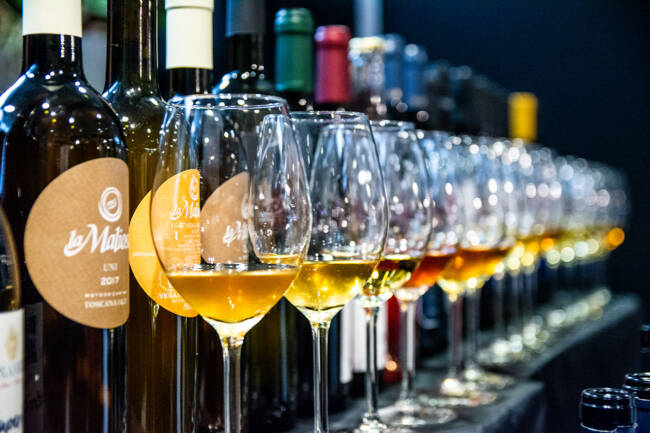
De winnende wijn 9+
Bianco Breg, Gravner, Venezia Giulia, Italië 2009
Sauvignon blanc, pinot grigio, chardonnay, riesling italico, fermentatie en lange maceratie per druivenras in Georgische qvevri onder de grond, na persen nog eens 5 maanden in qvevri, gevolgd door assemblage en 6 jaar rijping in grote houten vaten; oranje-mahonie kleur, versmolten fruit, o.a. sinaasappel en abrikoos, lichte touch van soja, zachte, mollige aanzet, vettig laagje op de tong, intense mineralen, lichte toets van chocolade, zeer complex, enorme lengte, blijft veranderen qua aroma’s
Delicroatia € 53,00
Overige finalisten:
7,5
Nimi, Joan de La Casa Viticultor, Alicante, Spanje 2015
Moscatel, fermentatie op rvs; sappig mondgevoel, lichte associaties met mandarijn, zacht en mals(13,5%)
7,5
Nimi, Joan de La Casa Viticultors, Alicante, Spanje 2013
Moscatel, fermentatie op rvs; meer intensiteit in kleur, geur en vooral in smaak qua aroma’s, lichte toets van maggi, soja en mandarijn, goede zuurgraad, naast kruidige onderlaag
8
Nimi Tossal, Joan de La Casa Viticultors, Alicante, Spanje 2015
Moscatel, 12 maanden rijping in Amerikaans hout; aromatische geur en smaak, mooi gerijpt fruit, mals op de tong, afgerond geheel(14%)
8-
Nimi Naturalment Dolç, Joan de La Casa Viticultors, Spanje 2015
Moscatel, rijping in Amerikaans hout; mokka en marsepein in geur en smaak, intens en zacht, meer aromatisch
8
Mtsvane Kakhuri, Chateau Khashmi, Kakheti, Georgië 2017
Mtsvane kakhuri; rustige, evenwichtige geur, veel smaak met duidelijke impressie van mandarijn, evenwichtige structuur, strakke finale met jodiumtoets, mooi bittertje op het einde, zeer intense wijn (13%)
8-
Bianco, Fattoria La Maliosa, IGP Toscana, Italië 2016
Procanico, ansonica e.a. traditionele rassen, biodynamisch, 4 weken maceratie, 5-6 maanden houtrijping; sappige geur- en smaaksensatie, mooi gerijpte tonen, voldoende vulling, veel ananastonen, elegante structuur, toegankelijk
7
Pinot Gris, Domein Aldenborgh, Limburg, Nederland 2017
Pinot gris, biologisch; neutrale geur, duidelijk pinot gris, sappige textuur, goed fruit, zuurgraad, schoon palet, mag meer spanning hebben (12,5%)
Pierre Ache
8+
GRK, Kriz Winery, Peljesac, Kroatië 2016
Grk; zacht palet, afgerond, duidelijk mandarijnassociaties, mooi gedoseerd, prachtig van smaak, evenwichtig, bijzonder goed samengesteld, veel lengte (14%)
7
Fejro, Weingut Ploder-Rosenberg, Vulkanland Steiermark, Oostenrijk 2015
75% souvignier gris, 15% chardonnay, 10% sauvignon blanc, biodynamisch, 120 dagen maceratie en fermentatie in amfoor, 18 maanden rijping sur lie in amfoor; nogal straffe tonen, mandarijntoets domineert smaakpalet, intens en rechtlijnig
8
Pinot Grigio, Miklus, Collio, Italië 2016
Pinot grigio; oranjebruin uiterlijk, zacht op de tong, malse mondbeleving, mooie aardbei, levendige zuren, licht nootachtig, grip, karakter, toegankelijk
8
Vitovska, Skerlj, IGP Venezia Giulia, Italië 2016
Vitovska grganja, 3 weken fermentatie en maceratie in eiken vat, 24 maanden houtrijpijng; goudgeel uiterlijk, sappig van smaak, beetje mollig, goede balans, lekker
Delicroatia € 30,00
8
Ribolla, Franco Terpin, IGP delle Venezie, Italië 2011
Ribolla gialla, 12-15 dagen maceratie en fermentatie in grote vaten, 2 jaar houtrijping; oranjekleur, sappige mondbeleving, evenwichtig, duidelijk abrikoosaroma’s in geur en smaak, mooi fruit, goede zuren, opvallend mooie evolutie
Delicroatia € 28,00
7,5
Sauvignonasse, Miecyik, Vipava, Slovenië 2013
Sauvignonasse (friulano); sappig en aromatisch, goede balans
Delicroatia
7,5
Cuvée Vincent, Rencel, Kras, Slovenië 2012
Malvasia, sauvignon blanc, chardonnay, vitovska, 30 dagen maceratie, 2 jaar houtrijping; beperkte aroma’s, wel intens en diep
Delicroatia € 30,00
8-
Cuvée, Klabjan, Istra, Slovenië 2015
Malvasia, pinot grigio, sauvignon blanc, chardonnay, 3 dagen maceratie en fermentatie op rvs, 10 maanden houtrijping sur lie; sappig en gekonfijt, beetje marsepein, pikant pepertje, goede lengte
7,5
Zaria, Batic, Vipava, Slovenië 2015
Pinela, zelen, ribolla gialla, vitovska, klarnica, yellow muscat, chardonnay; aparte geur, lastig, lekker en veel souplesse, mooi fruitig
Delicroatia € 34,00
7+
Nineo Khikhvi, Nine Oaks Estate, Kakheti, Georgië 2017
Khikhvi; straffe aanzet, directe stijl, heel intens, aparte smaak
8
Graue Freyheit, Weingut Heinrich, Burgenland, Oostenrijk 2016
Weissburgunder, grauburgunder, 15 dagen fermentatie en maceratie op rvs, 14 maanden houtrijping sur lie; onrustige kleur, stroef, fris, fruitig, mooie aanzet in geur en smaak, zeer goed doordrinkbaar, prachtige balans
Résidence Wijnen € 36,95
9
Angel Grande Cuvée, Batic, Vipava, Slovenië 2016
Pinela, chardonnay, malvazija, rebula; licht uiterlijk met subtiel groene reflex, geel fruit, perzik, speciale aroma’s, transparant, ook impressies van banaan en lychee, heel schone geurwaaier, atypische smaak, heel verfijnd, slank op de tong, rijke aroma’s in geur en smaak, subtiele venkeltoets, fijne vulling, wordt nog mooier bij openstaan, elegant, veel lengte, subtiele gastronomische wijn, grote verrassing
Delicroatia € 38,00

Orange Wine Revolution 2018 - Den Bosch 04. november & Amsterdam 05. november
2018, december
A new winery at The Orange Wine Club
Križ Winery
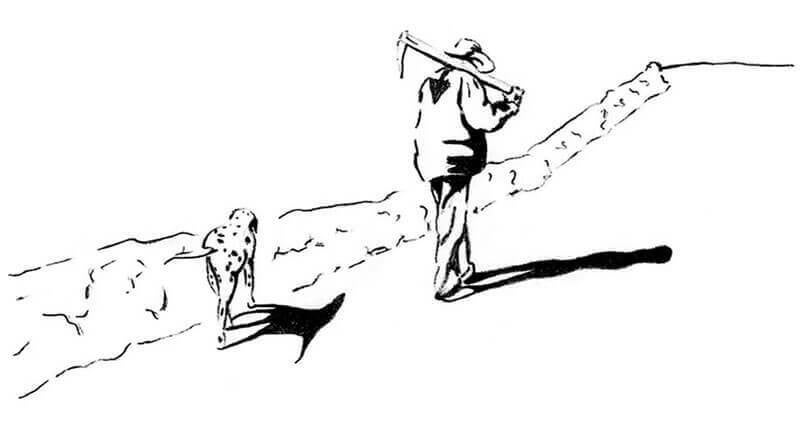
A union of tradition and modernity: the story of a family winery
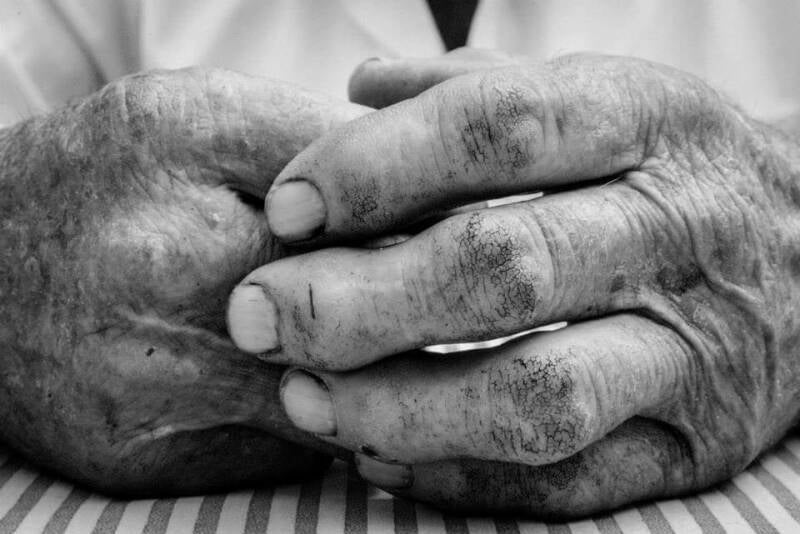
We are certified organic producers of local varieties Plavac mali and Grk and our winery is located on the Pelješac peninsula in southern Dalmatia. Winery comprises only 2.7 hectares of vineyards with a maximum annual production of 6000-8000 bottles (depending on the year). Grk is an indigenous and very rare variety from which we make a dry macerated wine with a full taste, unique scent and orange color. The red wine of Plavac mali is Pelješac in a bottle, created by blending wines from the Križ and Postup regions.
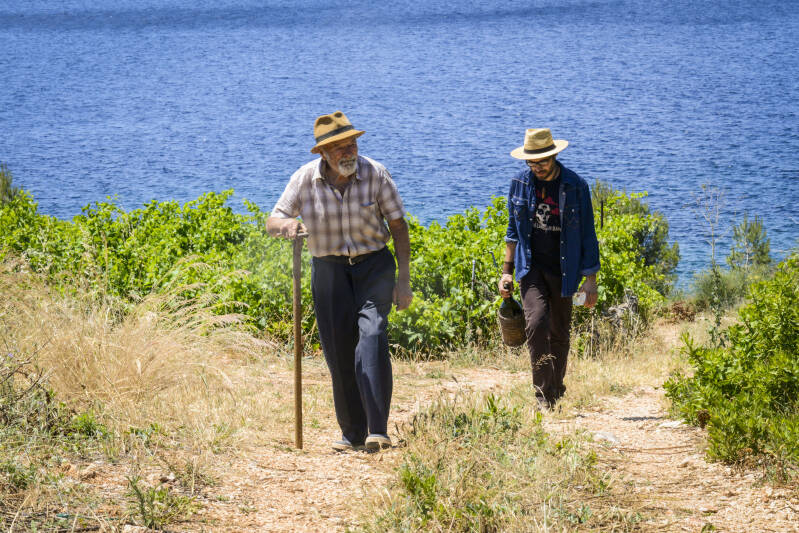
The vineyards on the Križ hill grow on sandy dolomite soil whereas the vineyard in Postup is situated on limestone, gradually descending toward the sea. The conditions of the vineyards are extreme, with exceptionally difficult, rocky terrain at a slope of up to 45 degrees the ground deeply contoured in the shape of gutters.
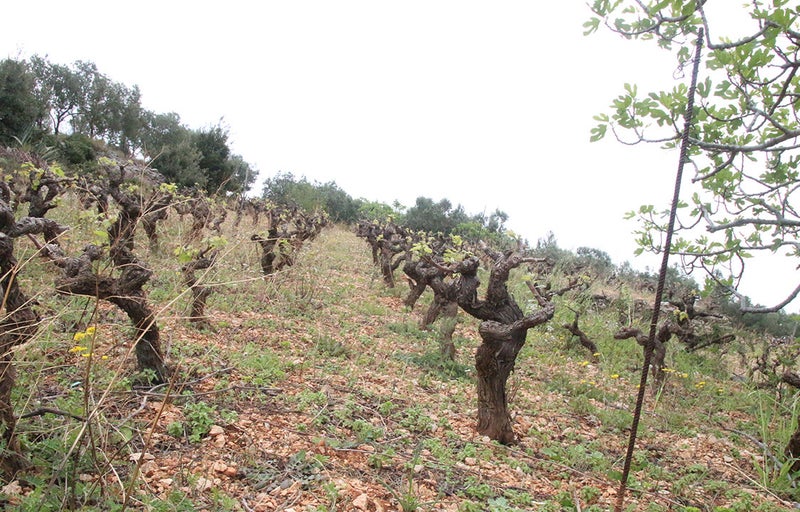
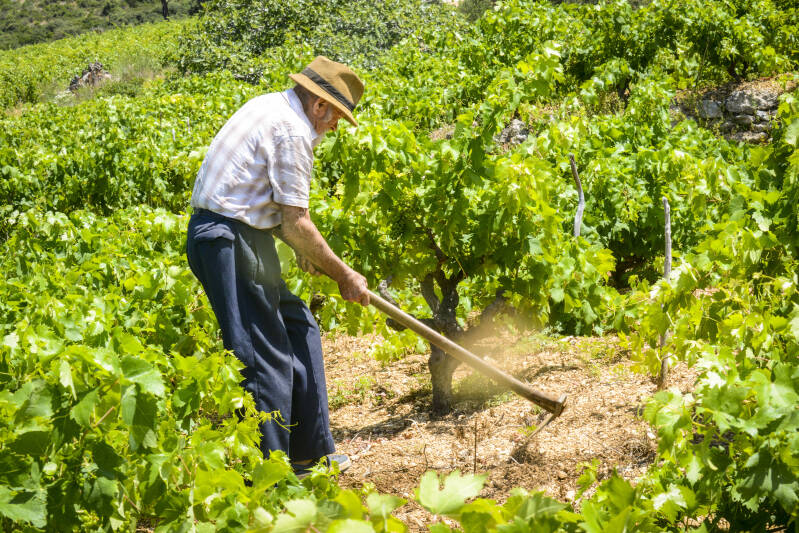
We have refined the terrain by hand, creating terraces with dry-stone-walls – the protectors and guardians of poor soil. The cultivation of the vineyards and crops is 100% natural and traditional, with some biodynamic practices. Only wild indigenous yeasts are used for fermentation and aging takes place in neutral large barrels made of Slavonian oak for 12 months. The strength of our wines lies in their naturalness.
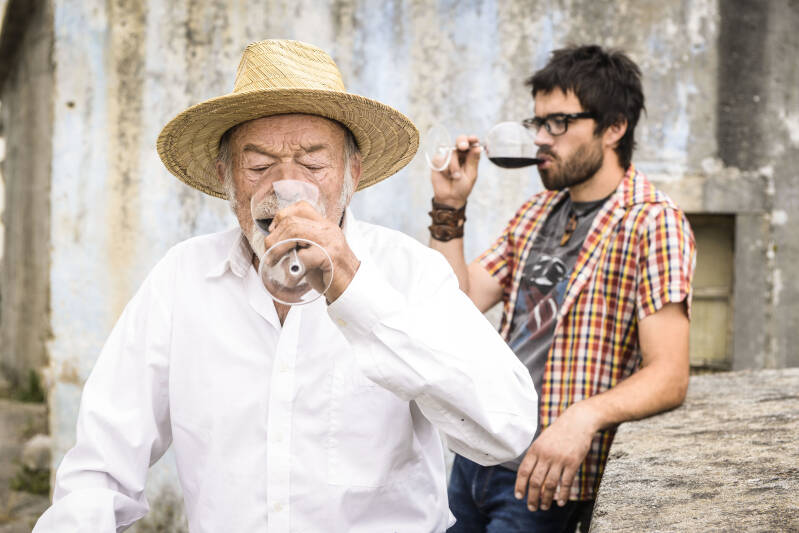
Plavac loves us, but we love it even more!
Denis, Mile & Maja
Peljesac - Dalmatia - Croatia
2018,november
Join the Orange Wine Revolution in Amsterdam & Den Bosch!

Orange Wines, The Fine New Old Tradition
Last week the NRC paper published an elaborate article on them. Wines lists all over are starting to carry orange wines slowly. During the Gastronomy/Fine Food Professional, on November the 5th at Elicium of the Amsterdam Rai, there will be a lot attention on The Orange Wine Revolution. This is organized by The Wine & Food Association together with Marijana Siljeg, from The Orange Wine Club, in cooperation with I Feel Slovenia.
On Sunday the 4th between 15:00 and 18:00 we will give a little taste to consumers in restaurant Pollevie, of chef Martin Berkelmans in 's Hertogenbosch.
Unique smells and tastes
Orange wines might sound like a strange modern invention, but it's one of the most traditional methods of winemaking. There are no usual additions used here. Partly because of this you will find smells and tastes that are not usual for normal white wines. Orange wines are in the middle: they have the liveliness and energy of white wine, but also the body and complexity of red wine. All over the world orange wines receive attention this year, with events from New York City, Vienna and Adelaide to London.
Slowfood
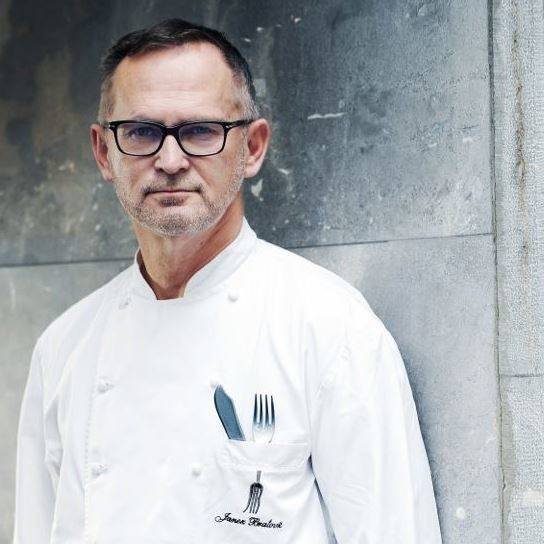
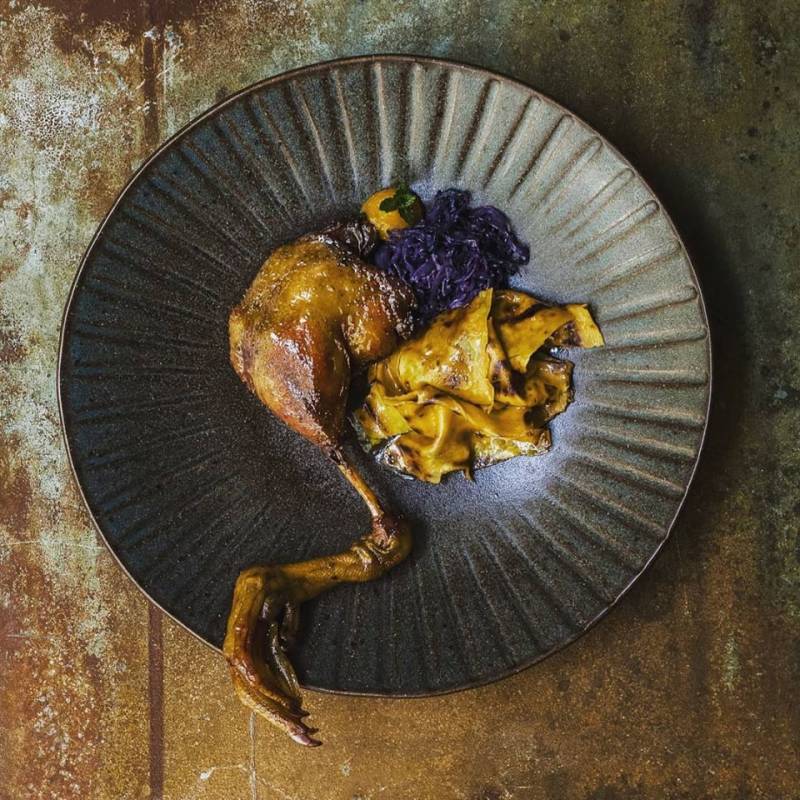


You can try more slow food at the The Orange Wine Club and Karlic Tartufi stands. Furthermore there will be various tastings throughout the day of wines from different countries at the Orange Wine Revolution Theater. But you can also meet the producers, their passions, regions and background stories yourself.
Sunday November the 4th:
Consumer tasting Orange Wine Revolution
Location: restaurant Pollevie, Hofvijver 2B in 's-Hertogenbosch
15:00-18:00hr
Do you want to be present on the 4th of November at The Orange Wine Revolution in 'sHertogenbosch?
For more information and application please contact us by phone on 073-518 4646 or on www.pollevie.nl
Monday November the 5th:
Gastronomy-Fine Food Professional / The Orange Wine Revolution
Location: Elicium, RAI Amsterdam, Europaplein 24, 1078 GZ Amsterdam
12:00-21:00hr
Do you want to be present on the 5th of November at The Orange Wine Revolution?
Please apply here
Program
During the Gastronomy-Fine Food Professional a diverse program will be presented, with tastings, masterclasses, presentations and competitions. A complete overview will soon be available at www.vakbeursgastronomie.nl
2018,october
GASTRONOMY/FINE FOOD PROFESSIONAL 2018
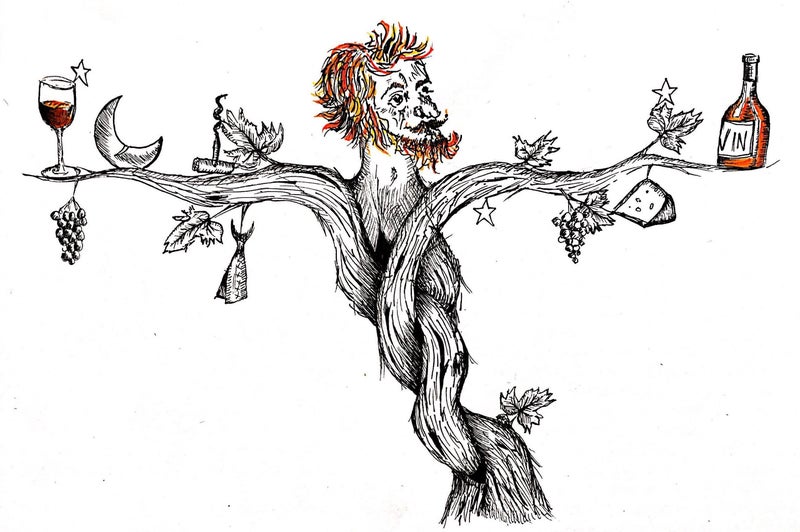
JOIN THE ORANGE WINE REVOLUTION!
At the Gastronomy-Fine Food Professional, the leading gastronomy trade fair for restaurant and wine professionals, November 5 at the RAI Amsterdam, The Netherlands, a bright spotlight will shine on orange wines from different parts of the world. Wine producers with at least one orange wine in their portfolio are invited to join their orange and natural wine making colleagues from Slovenia, Croatia, Georgia, Italy, Spain, Austria, and present their wines in person. Apart from their fantastic orange wines you will have the chance to try their natural white, red, rosé and sparkling wines.

ORANGE WINE AREA
For 5 th november one area of the exhibition hall will be reserved exclusively for orange wine producers to present their wines. The variety and gastronomic qualities of orange wines will be demonstrated during presentations, masterclasses and wine-food tastings, featuring dishes prepared by chefs as well as artisanal food products.
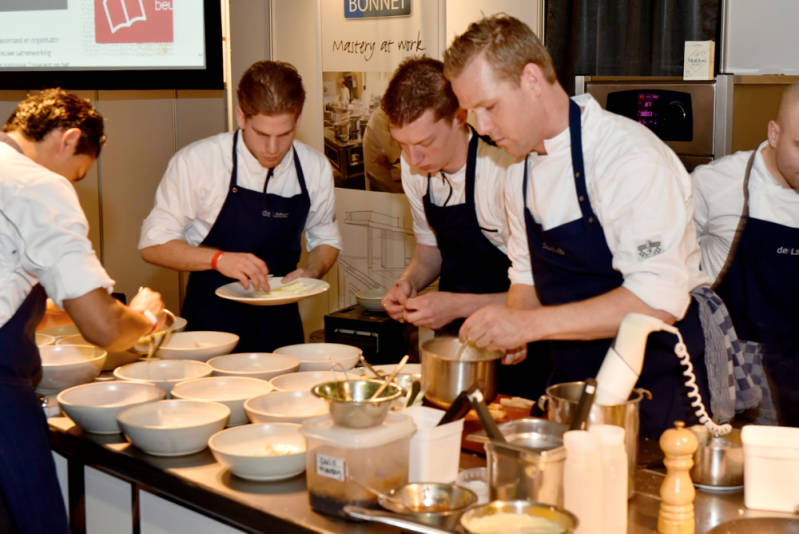
Various food products will be presented, e.g. pumpkin seed oil, Hungarian Mangalica meat (ham, sausages, salami, pancetta, bacon), mediterranean and oriental spices, cheeses from various countries and olive oil from 300 year old trees.
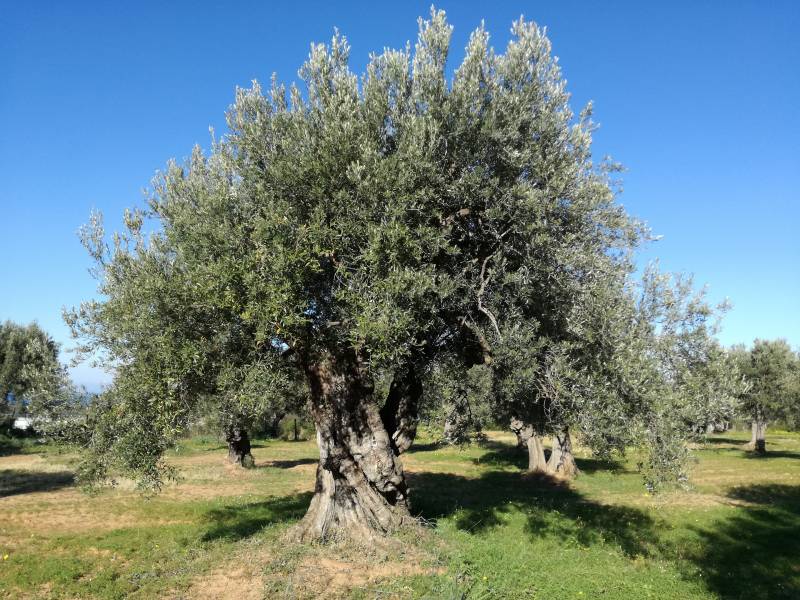
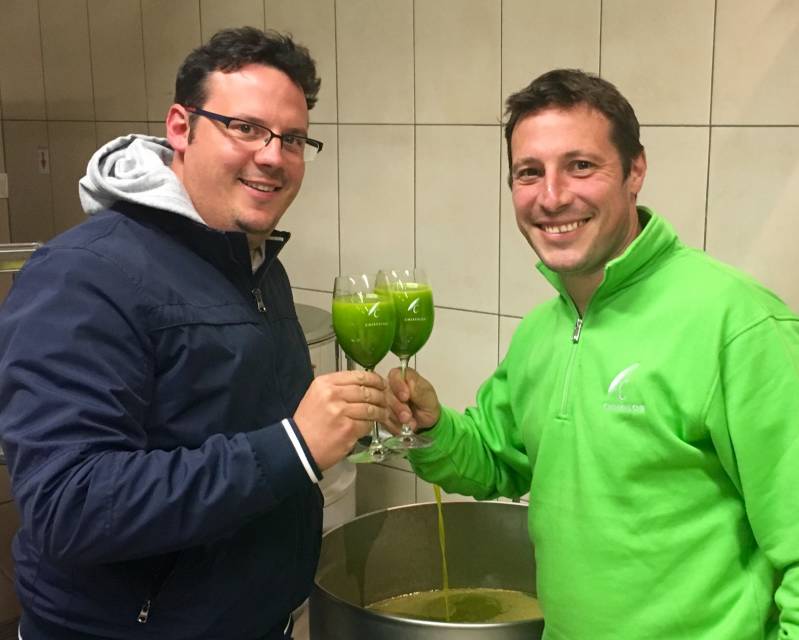
AUTHENTIC AND DELICIOUS
Discover and explore the fourth wine colour! Orange wine might sound like a crazy modern invention, but it’s actually one of the oldest, most traditional ways of making wine from white grapes, but treating them as if they were red – so the skins are left in the mix. It’s a very natural, hands-off way to do things, without any of the additives or processing that are common in most modern wines. You’ll find unique flavours and aromas that just don’t exist in conventional white wines. Orange wines are truly in the middle, with the liveliness and drive of white wines, but the body and complexity of reds. They’re delicious, nourishing and authentic.

ORANGE WINE CONTEST
The 30th annual Proefschrift Wine Contest – for the first time including a special Orange Wine category. Orange wine producers who present their wines at the trade fair, are also invited to enter their orange wine(s) for the 30th Proefschrift Wine Contest. On November 5, awards will be given for the best orange wines in two price categories: up to 15 euros and above 15 euros (retail price per bottle). All winning wines of the wine contest will be exhibited in a special area of the fair. Contest rules and entry form available on request.

MEET THE PRODUCERS
This is a unique opportunity to meet so many of the passionate family producers who make these wines, taste their produce and find out more about their regions and traditions. Besides the extensive assortment of natural wines, the fair will be enriched by producers of delicacies all made in a traditional manner and without any artificial additives.
If you’re ready to challenge your whole perception of wine, step outside the safe but boring confines of the supermarket shelves and really live a little, come and join us on 5 November.
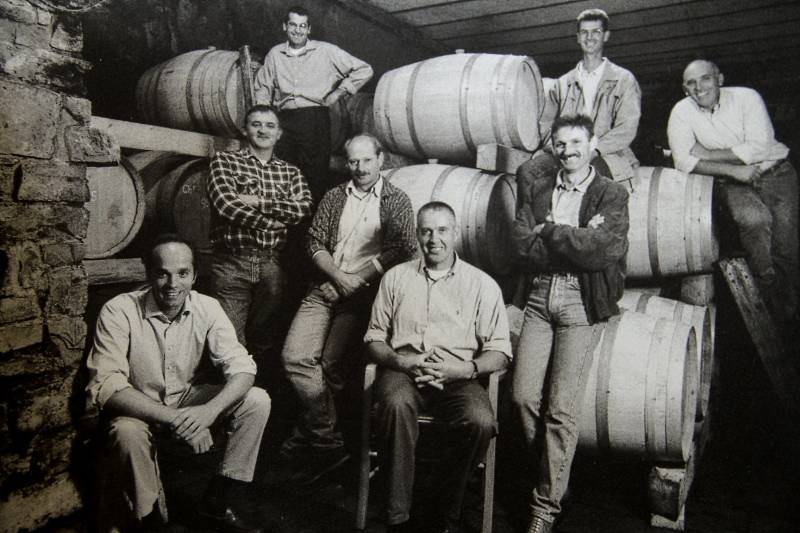
Application forms and additional information available via: js.vanlissum@thewinesite.nl
In cooperation with :

Angel 9 Reserva, Batič, Vipava, Slovenië
2018,maart | 9 seconds, Proefschrift
9 seconden of 12 uur? Snel een wijn keuren kan iedereen, maar er zijn wijnen die tijd nodig hebben. Soms een uur, soms een dag. Via slow tasting dring je door tot de essentie.
tekst Jan van Lissum
9 seconds is een platform voor bijzondere en aparte wijnen. Dat zijn niet per se de duurste, want ook op een lager prijsniveau zijn excellente flessen met een bijzonder verhaal te koop. De titel staat voor een bepaalde kwaliteit van afdronk van een wijn. Met 9 seconden afdronk is een wijn in de theorie lang van afdronk. En terwijl elke goede proever op dat moment concludeert dat hij met een interessante wijn te maken heeft, stopt hier de theorie. Latere fases bestaan gewoonweg niet na 9 seconden. Het perfecte moment waarop wijn zijn intrinsieke, unieke waarde toont, ligt echter verder weg, vaak enkele uren, soms wel tot twee dagen. Dan is het een beleving om hem te proeven en om er over te schrijven…

Proefnotities
Licht oranjegele kleur, fijne geur met bloemen, geel fruit en een zilt accent; sappige aanzet, mondvullend, rijk aan zoet rijp fruit, warm smaakpalet, complex, honingdrop, goede zuren en spanning, breed, mineralig, licht medicinaal, loepzuiver.
Na 2 uurBreder geur- en smaakpalet, mineraliteit neemt toe. Ook licht medicinaal accent. De aroma’s worden intenser, alles wordt versterkt en de wijn wint aan lengte.
Na 6 uurMeer stabiliteit, de aroma’s worden steeds intenser en eisen elk duidelijk hun rol op. Zeer levendige fase.
Na 12 uurDe wijn is tot rust gekomen, de aroma’s raken versmolten en er ontstaat meer eenheid. Wat minder schakering, meer toegankelijkheid.
Na 24 uurOranjegele kleur. In de geur duidelijke ‘orange’-aroma’s, abrikoos, ananas. Licht fruitige aanzet waarin de geuraroma’s terugkomen plus een hint van toffee. Zacht en rond van smaak met een lichte ziltigheid in de finale. Goede fraîcheur en fruitimpressie, afdronk met veel sap en lengte. Nog altijd in optima forma. Bijzondere gastronomische wijn voor echte liefhebbers.
Technische gegevens:
Microklimaat De warme Adriatische zeewind en de koude luchtstromen van de Alpen komen hier samen. De intense wind die hiervan het hele jaar door het resultaat is, houdt de lucht zuiver en droog en de wijngaarden gezond. Daarbij filteren de omliggende oerbossen als het ware de lucht voordat die de wijngaarden bereikt.
Bio-certificaat Demeter (sinds 2014)
Assemblage chardonnay, pinot gris, sauvignon, welschriesling, pinela, rebula, vitovska, zelen, malvazija van 3 verschillende oogstjaren en afkomstig van de beste witte percelen van Batic.
Leeftijd stokken gemiddeld 30 jaar
Bodem mergel, klei, zandsteen, flysch
Vinificatie maceratie en fermentatie in grote vaten van Sloveens eikenhout
Opvoeding minimaal 3 jaar in grote foeders van Sloveens eikenhout
Alcoholpercentage 14%
10 NOVEMBER 2017
Champagne, kaviaar en Orange Wine op de Gastronomiebeurs
Wat was het weer een verwennerij om afgelopen week over de Gastronomiebeurs in Utrecht te struinen. Tientallen stands van verschillende importeurs en bedrijven met heerlijke wijnen, kazen, vlees en vis en nog veel meer.
Proeverij naar mijn hart

Ik belandde al vrij snel in een Champagne en kaviaar demonstratie. Je kreeg zes verschillende Champagnes te proeven en Persian Caviar zorgde voor de kaviaar. Leuk om te merken hoe verschillende smaken met elkaar werken of juist helemaal niet. Zoals drie kleine proeflepeltjes met zalm, zalm en kaviaar en een lepel met truffel erbij. De ene Champagne kon de truffel dan bijvoorbeeld niet aan of andersom en een andere combinatie zorgde weer voor een overheerlijke smaakexplosie. Zo zie je maar weer dat het belangrijk is om te proeven, proeven en proeven. Ook wanneer je thuis aan het koken bent. Trek desnoods een paar wijnen open en probeer je gerecht uit met kleine proefslokjes. De wijnen die je dan besluit niet te schenken bij het eten, komen toch wel op, tenminste bij ons thuis wel.
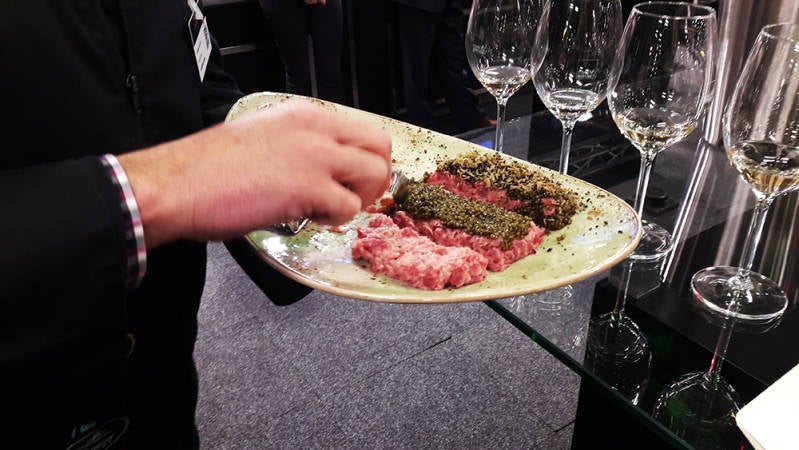
Verrassing!
Maar weer even terug naar de Gastronomiebeurs. Terwijl ik lekker aan het struinen was tussen de standjes, liep ik tegen de wijnen aan van The Orange Wine Club. Jazeker, oranje wijn. Is dat hetzelfde als de blauwe wijn die maar geen trend wilde worden? Nee, zeker niet. Orange Wine is tegenwoordig hip, maar zeker niet nieuw.
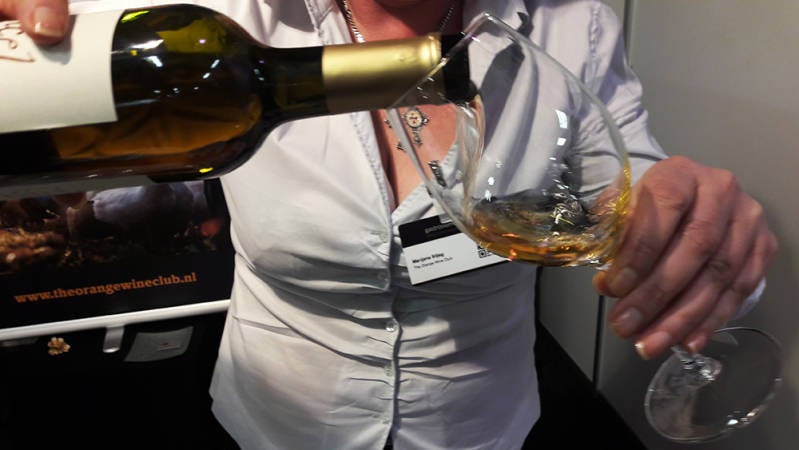
Orange Wine
De kleur is echt oranje, maar niet door toegevoegde stoffen. Het is witte wijn, maar dan op de manier van rode wijn gemaakt. Say what? Even simpel: bij witte wijn worden de schillen en het sap na het persen van elkaar gescheiden en bij rode wijn blijven de schilletjes en pitjes een geruime tijd lekker mee weken. Voor Orange Wine wordt gewerkt met witte druivenrassen waarvan de schillen mee vergisten in de most, het druivensap. In de schil zitten kleurstoffen waardoor de wijn kleuren kan krijgen van geel tot oranje. Omdat de schillen en pitten mee vergisten krijgt de wijn ook tannines mee en dus een flinke kick. Orange Wines zijn natuurlijke wijnen, zonder al te veel toevoegingen. Een echte must try als je eens wat anders wil. Je kunt het niet vergelijken met rode of met witte wijnen, het is oranje, anders, bijzonder en sommige zijn heel lekker. Misschien moet je er even aan wennen, maar ik ben om!
Meer Wijndummy
Voor meer Wijndummy like je de Wijndummy Facebookpagina, volg je Wijndummy op Instagram en ga naar het Wijndummy YouTube kanaal. Heb je tips? Mail naar info@wijndummy.nl!
29e Proefschrift Wijnconcours
Deze drie Orange wijnen staan in de finale van het 29e proefschrift wijnconcours, in klasse premium choice! Al deze drie wijnen zijn orange, natuurlijk, biodynamisch en zonder toegevoegde sulfieten. Bent u nieuwsgierig naar de Orange wijnen, dan bent u van harte welkom. Ik presenteer mijn wijnen op de gastronomie 2017 in de jaarbeurs Utrecht op 6 en 7 november!
M.Siljeg

De prijswinnaars van het 29ste Proefschrift Wijnconcours worden op maandag 7 november 2017 bekend gemaakt tijdens de vakbeurs Gastronomie in de Jaarbeurs te Utrecht. Ook de tweede dag van de beurs zijn alle finalisten te proeven, in totaal circa 200 wijnen.
Amber Revolution
Thanks to our good friend Simon Woolf and his efforts orange wines are finally receiving the attention they deserve. More and more people are getting to know and are falling in love with orange wines. Please let Simon guide you through this journey and help us support him and his Kickstarter campaign on https://kickstarter.amber-revolution.com/.
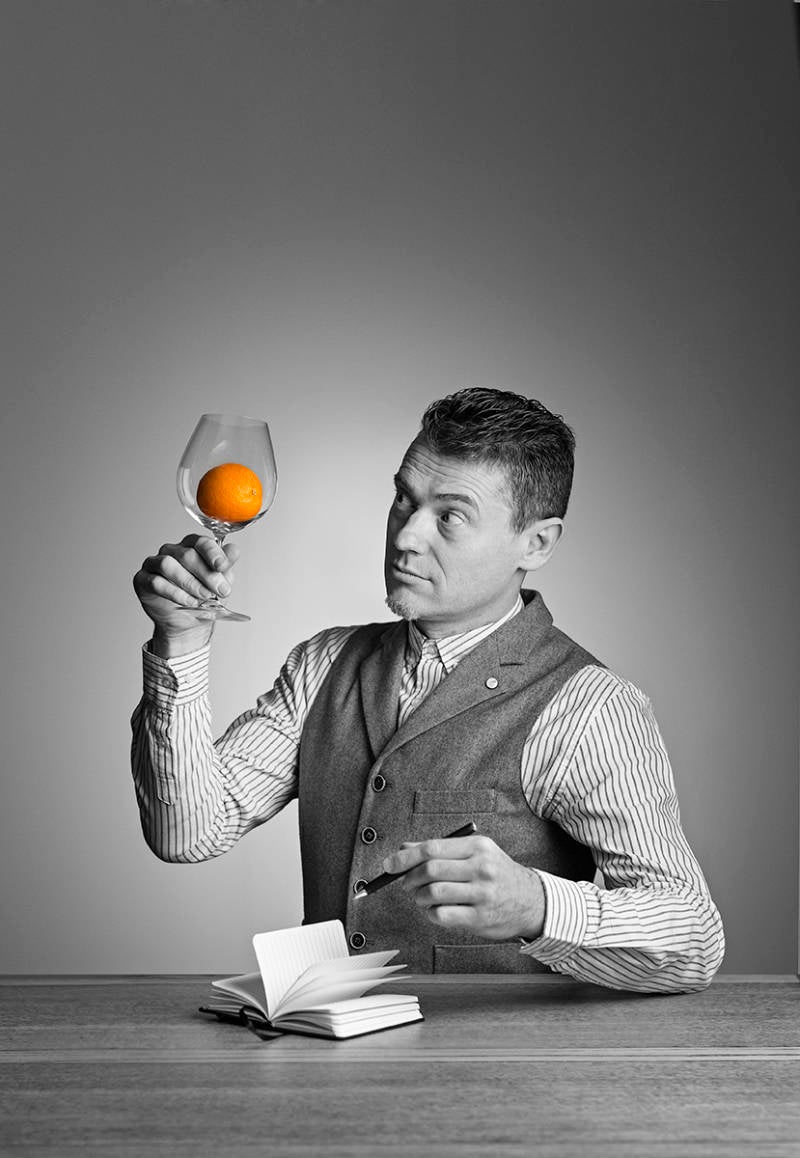
" Amber Revolution will be the first to tell the full, forgotten story of orange wine/amber wine/macerated white wine (insert your own favourite name here!), from the style's heartland in Friuli and Slovenia, to Georgia and beyond.
It's going to be a 250 page full colour illustrated book with profiles of over 180 winemakers worldwide who specialise in the style. I think the story behind these wines is quite extraordinary, and I aim to tell it more in the manner of a novel than a dry reference book - it should be gripping and fun to read." Simon Woolf
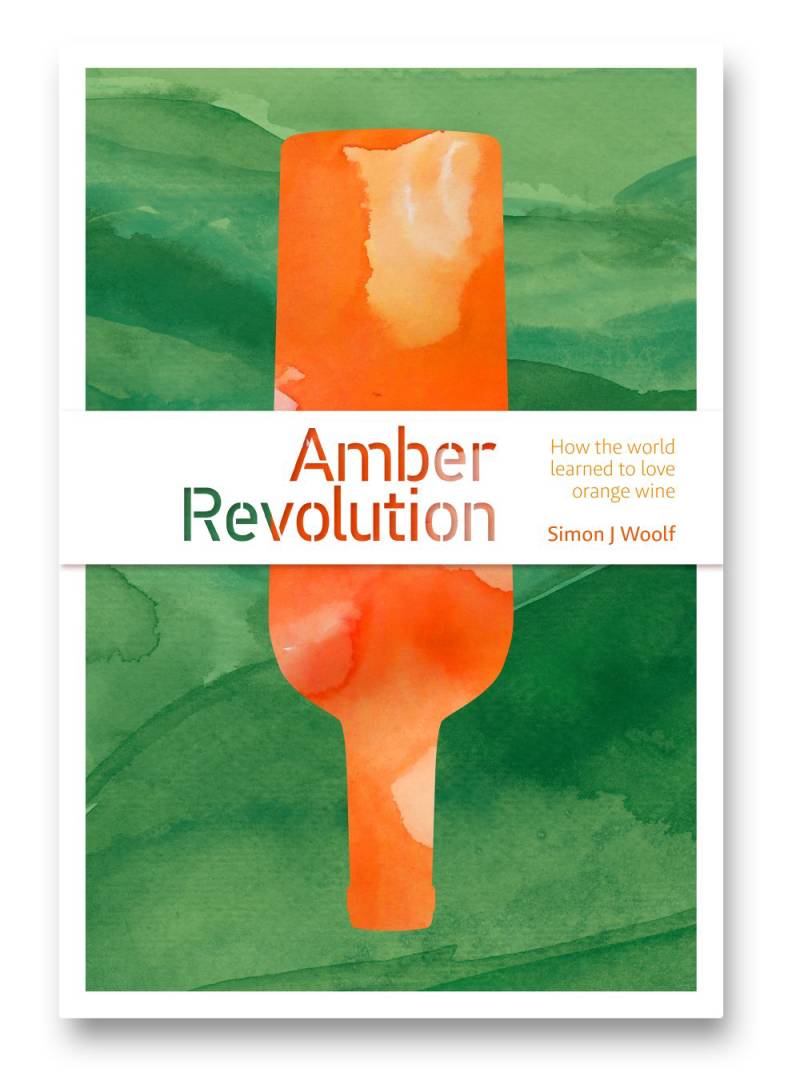
Orange Wines krijgen een podium
Verslag van de NGS proeverij van Orange Wines
gehouden op 8 mei 2017 in Restaurant Podium Onder de Dom te Utrecht.
Door Paul Op ten Berg.
BATIČ ANGEL Grande Cuvee 2013
93 points
FINALIST in category
Red Wines - Eastern Mediterranean
Retail Price $75.00
ULTIMATE WINE CHALLENGE
ultimate-beverage.com
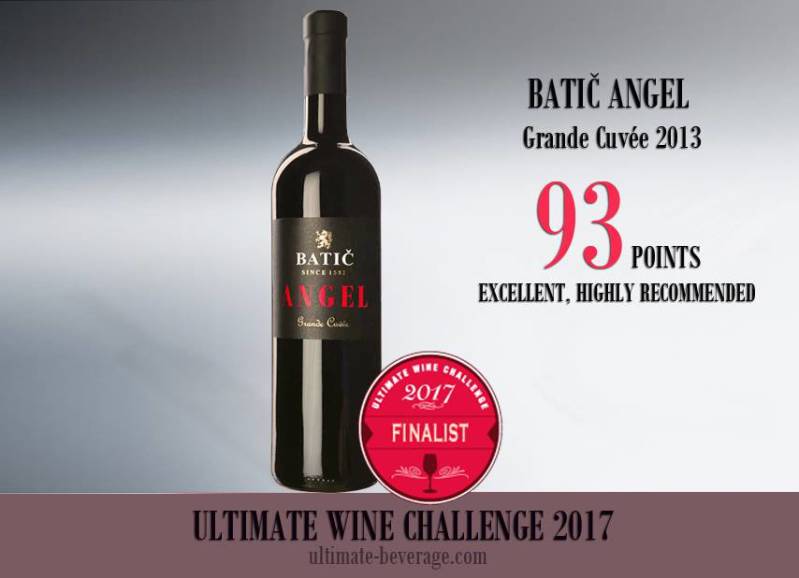
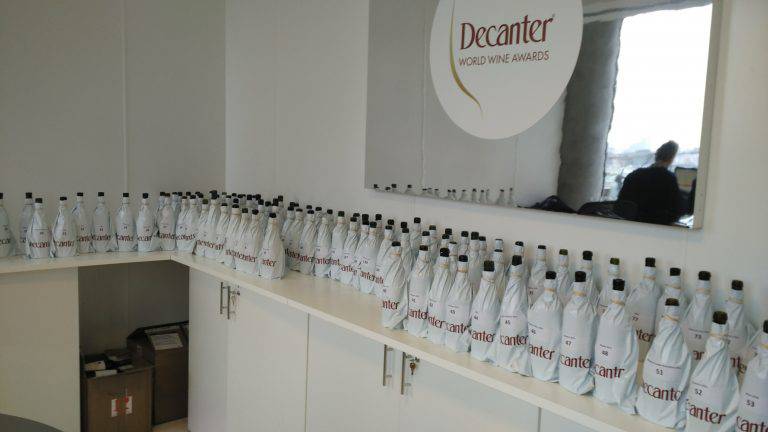
What’s the biggest problem with organising a natural wine tasting? Defining the parameters ranks very high. Also, if one publicises the results with any level of exposure, being prepared to fight off the negative, trolling comments can be a serious undertaking. This piece is partly a public response to some such comments.
As anyone who follows my writing will know, I’m a critical supporter of the natural wine niche. I think this loosely defined movement has done wonders for rehabilitating the wine world. It has rescued us from increasing homogeneity and the desire of industrialists the world over to control, regulate and commercialise everything. For that I am truly and selfishly grateful – my glass overflows with interesting liquids, even if I don’t find all of them delicious.
I worked with the team at Decanter earlier this year, to put together their first major panel tasting of natural wines. The aim was to see if three very different tasters could agree on their favourite wines, and thus to signpost some truly fine wines to Decanter’s audience. My hope was to both aid new discovery, and broaden the palates of those readers who might be more accustomed to fine wine’s longer established oeuvres.
Whilst our excellent panel – Andrew Jefford, Sarah Jane Evans MW plus myself – selected widely varying wines as our top tens, the tasting proved beyond any doubt that there is very fine wine being made within the boundaries of the natural scene.
But what exactly are those boundaries, and how did we choose them?
To counter some sniping, tedious comments that were made when the article was published, let’s be clear that Decanter did not create its own definition. We looked to Isabelle Legeron MW’s world leading Rawfair manifesto, and to Les Caves de Pyrene’s Real Wine Fair charter for our cues. These definitions were then doublechecked with other natural wine specialists and importers.
Inevitably, our adopted definition is only one of a number of possibilities. Some believe that “natural wine” has to mean no added sulphur, a view not shared by Legeron, Les Caves or me. Some feel that the allowed limit of 70 mg per litre of total sulphur is very high.
I must counter that point. Those who think that 70 mg/L is high may be in denial about some of their favourite wines or winemakers. I meet quality-focused producers all the time who end up with 80 – 100 mg/L total SO2 – one hardly has to be spraying yellow dust willy nilly around the winery to get to this level. It is still reasonably low, compared with the upper limit of 150 mg/L imposed by the EU for red wines (whites and sweets have yet higher limits).
It must also be noted that this limit is for any style of wine – so a stickie with a lots of residual sugar has the same allowed maximum as a dry red wine. Rawfair adopted the 70 mg/L figure, I think in 2014, after initial versions of their manifesto stated only the vague “at most, a little SO2“. We decided to run with their choice. Some protest that any such boundary is arbitrary. Of course it is, but no more so than limits set by the EU, organic or biodyanamic legislative bodies.
It’s my understanding that Rawfair aims for a balance between inclusivity and robustness. Decanter felt this was sensible too. It’s worth knowing that almost 50% of the 122 wines submitted were below 40 mg/L. Some 10 – 20 were made with no added SO2. My figures are vague as the technical data we received on each wine was variable. For example, when a producer states total SO2 of 12 mg/L, it is not always apparent whether they used any added SO2 or not, as fermentation can naturally produce this level.
Our other parameters are I’m sure by now familiar:
• Vineyards farmed organically or
biodynamically – certification was
strongly preferred, but uncertified wines
were accepted
• Hand-harvested only
• Fermentation with indigenous (wild)
yeasts
• No enzymes
• No additives added (such as acid,
tannin, colouring) other than SO2
• Unfined, and no (or light) filtration
• No other heavy manipulation (such as
spinning cone, reverse osmosis,
cryoextraction, rapid-finishing,
Ultraviolet C irradiation)
Again, this should be considered an inclusive baseline. The natural wine world has its extremists who insist that a producer is not “natural” if they use any form of temperature control, or do even the lightest of filtering (which I’d take to be 8-10 microns). I don’t sit in that camp. There are commercial imperatives to selling wine, and if some producers decide to coarse filter I have no problem with it. Coarse filtering has virtually no effect on the taste of a wine, it just ensures you are not fishing out big clumps of crud from your glass.
The winning wines
Decanter is a consumer orientated magazine, and requires that all its journalists score wines. I’m not a huge fan of scoring, but at the same time with 122 wines some kind of system is needed to make a shortlist and a final selection. There were at least 60-70 wines here that I’d have been happy to take home and enjoy over dinner.
Our final selections, organised into a top 10 from each taster, and the one overriding favourite that all three of us loved are incredibly disparate. Some may cry that there are wines in these lists that are not “natural”. I can only retaliate by saying that all these wines conformed to our charter of quality, to the best of our knowledge and based on the information submitted by producers and importers. So if people don’t feel they fit into the natural wine category, then we are dealing with cliquism at best and outright cultism at worst.
I don’t require a natural winemaker to be bearded and radical, nor do I need their label to say “vin de France” or have a risqué design of questionable taste. There are more conventional producers making excellent artisanal wines who just don’t happen to fit the “natural” image. Why should they be excluded? Let’s assess the liquid and not the polemic.
I was really pleased to make some new discoveries (such as Valdonica), but also to find that in blind tasting I’d picked some old favourites. It was great to see names like Foradori, Sepp Muster and Vodopivec in the top 10.
If you didn’t already see the magazine, you may want to know which wines got top billing. You can read the complete article as a PDF here.
The full list of 122 wines tasted can be found here.
Barking at the moon: Movia – Lunar 2008

Aleš Kristančič is a man whose reputation precedes him. Movia, the family’s estate in Western Slovenia since 1820, has become one of the most well-known producers from the region, and also a trailblazer for the skin contact style.
The 22 hectare estate is split across the Slovenian/Italian border, one of many after-effects from two world wars, although the wine is bottled as Slovenian. Farming is uncertified organic.
I’d encountered Movia’s wines on many occasions over the years, but only belatedly caught up with the man himself at a masterclass in Amsterdam last week. Kristančič is a big character, a showman you might say, so he’d brought his wife and daughter along for added emphasis. De rigeur for any movia event is the degorging of the “Puro” sparkling Rebula “en place”, with other wines ritually decanted into flashy Riedel decanters.
Kristančič seemed a little hesitant at first, not as brazen or confident as I’d expected. Perhaps this was down to his “farmer’s English”, as he put it – or a rather late night, as he admitted a few minutes in. But things soon warmed up with the help of some amour propre from the audience, with Kristančič becoming speedily more emphatic and enthusiastic.
I’ve had mixed experiences with the wines, sometimes finding them rather oxidised, sometimes just not special. But with their creator pouring them, even on a grey winter day in Amsterdam, they spoke convincingly. A range of varietal wines made with short skin contact (7 days) and temperature control were particularly charming in their freshness and expression – the Chardonnay 2014 perhaps the pick of the bunch, but a Sauvignon Blanc and a Rebula 2014 not far behind.
Still, orange weekly needed something with a bit more chew to get the heart-rate racing – and right at the end of the two hour tasting, there it was: Lunar Chardonnay 2008.
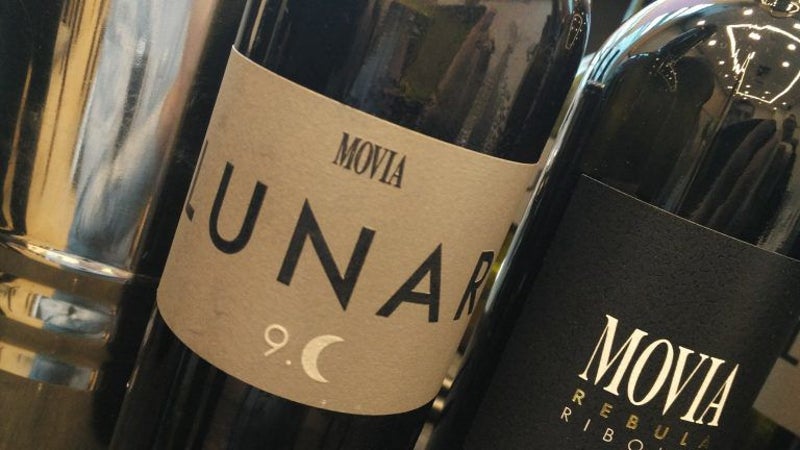
The Lunar wines are made without any added SO2 and bottled at full moon. They certainly qualify for the “natural” tag. Eight months of skin contact gives them a great backbone, but what surprised me in the 2008 was the supple, luxuriant texture. Chardonnay’s silky, honey-tinged side spoke loud and clear, in a wine that seemed incredibly fresh and pure considering the long ageing.
There’s nothing “difficult” about this wine, nothing that has to be explained or “understood”. It’s simply a pleasure to drink, hedonistic even. Yet it also has the herby, spicy complexity and interest to make you go back for a second or a third glass. Impressive stuff.
Thank you to Cru bio / Melman communications who organised the masterclass I attended.
Tannnico in the UK has the Lunar 2013 Rebula, also a great wine.
In the Netherlands, Movia wines are available online from Delicroatia / The Orange Wine Club. Lunar Chardonnay 2008 is €30, an entirely fair price for the quality.
Groei van ‘zuivere’ wijn
Gelukkig zijn er steeds meer producenten die hun wijn op een of andere manier op een ‘zuiverder’ manier gaan maken. Die geen ‘vervalsingen’ meer toepassen, en verantwoorde keuzes maken binnen het enorme spectrum aan technieken en methoden die de wijnbouw en de wijnbereiding ten dienste staan. Een aantal van dergelijke wijnen kon afgelopen maandag geproefd worden tijdens CruBio, een beurs voor biologische wijnen georganiseerd door Ghislaine Melman van Melman Communications. Van Ghislaine begreep ik dat die beurs een eigen initiatief is, waar ze ieder jaar hard voor moet werken om hem van de grond te krijgen. Gek eigenlijk. Zoveel mensen roepen om ‘zuivere’ wijn, maar de wijnliefhebber in Nederland daar goed zicht op bieden gaat moeizaam…
Op de beurs waren zo’n vijftien grote en kleine importeurs en twee producenten aanwezig. Mijn doel die dag was onder andere nader kennis te maken met de wijnen van Aleš Kristančič van MOVIA in Slovenië. Deze had ik op een eerdere beurs al eens geproefd, maar nu kwam de wijnmaker zélf zijn verhaal doen. En ik had begrepen dat hij een echt voorstander van ‘zuivere’ wijn was, zonder dat er een labeltje aan hing.
Alle labeltjes voor MOVIA
De wijnen van MOVIA ontstaan op de grens van Slovenië en Italië, in de omgeving van Brda. Sterker nog: een deel van de wijngaarden van de familie ligt in Italië. Al acht generaties is het wijnhuis in bedrijf. Dit is ook hét gebied waar de orange wijnen zijn ontstaan, en waar wijnmakers al generaties lang met schilcontact voor witte wijnen werken. In welke categorie de wijnen van MOVIA vallen? In ieder geval in de biologische. Maar ook de maanstand is voor Kristančič belangrijk, en er zijn diverse witte wijnen met schilcontact. Die ontstaan wel onder gecontroleerde temperaturen, in tegenstelling tot andere schilcontact-wijnen, die vaak hun gang mogen gaan tijdens de vergisting. En de wijnen hebben een laag sulfietgehalte. Een labeltje plakken is dus eigenlijk de wijnen tekort doen. MOVIA heeft alle labeltjes. Uit de wijnen én de persoon Kristančič sprak voor mij heel duidelijk de wens om zo min mogelijk ‘vervalsingen’ toe te passen, en zo puur mogelijk te werken. En daar gaat het om.
Mijn favoriete wijnen die dag waren de complexe en krachtige Chardonnay 2014, met schilcontact tijdens de vergisting; de toegankelijke en fruitige field blend Veliko Belo 2009 met druivenrassen sauvignon blanc, rebula en pinot grigio; de mousserende en zuivere Puro Rosé 2014 van pinot noir, met zo goed als geen toegevoegde sulfiet en bovendien ongefilterd; en de spectaculaire gelaagde Lunar van twee jaargangen, 2013 en 2008. Aan deze wijnen (Chardonnay en Rebula in 2013, Chardonnay in 2008) wordt helemaal geen sulfiet toegevoegd. Hele, onbeschadigde bessen gaan in de vaten, en de wijnen worden niet gefilterd. Van het decanteren van de wijn maakt Kristančič dan ook een mooie show. Dat er aan deze wijnen een prijskaartje hangt dat niet voor alledag is, zal duidelijk zijn. Maar de complexe Lunar is dan ook geen wijn om dagelijks te drinken. Daarvoor zijn weer andere wijnen, met andere labeltjes. Voor beide is er plek, wat mij betreft.
Een grotere CruBio
CruBio had nog diverse andere leuke verrassingen in petto, zoals de spetterend mooie Graupert Pinot Gris van producent Meinklang in Burgenland, Oostenrijk, en de orange wijnen van Weingut Gsellmann in Gols. Aan deze wijnen zal ik zeker nog aandacht besteden.
Wat zou het mooi zijn als deze beurs volgend jaar nog weer groter werd, en wijnen zonder ‘vervalsingen’ eerder de norm dan de uitzondering gaan worden! Dan krijgt de heer Chalmot misschien eindelijk zijn zin. Dat er ‘geene andere Wijn-behandelaars in de wereld waren, dan welke, hiervan overtuigd, zich zo na moogelijk aan de natuur poogden te houden’.
MOVIA wordt in Nederland geïmporteerd door The Orange Wine Club.
Op YouTube vertelt Kristančič over zijn wijnen zonder sulfiet.
Meer lezen over biologische, biodynamische en natuurlijke wijnen? In dit boek vind je uitstekend uitgelegd hoe het in elkaar steekt.





